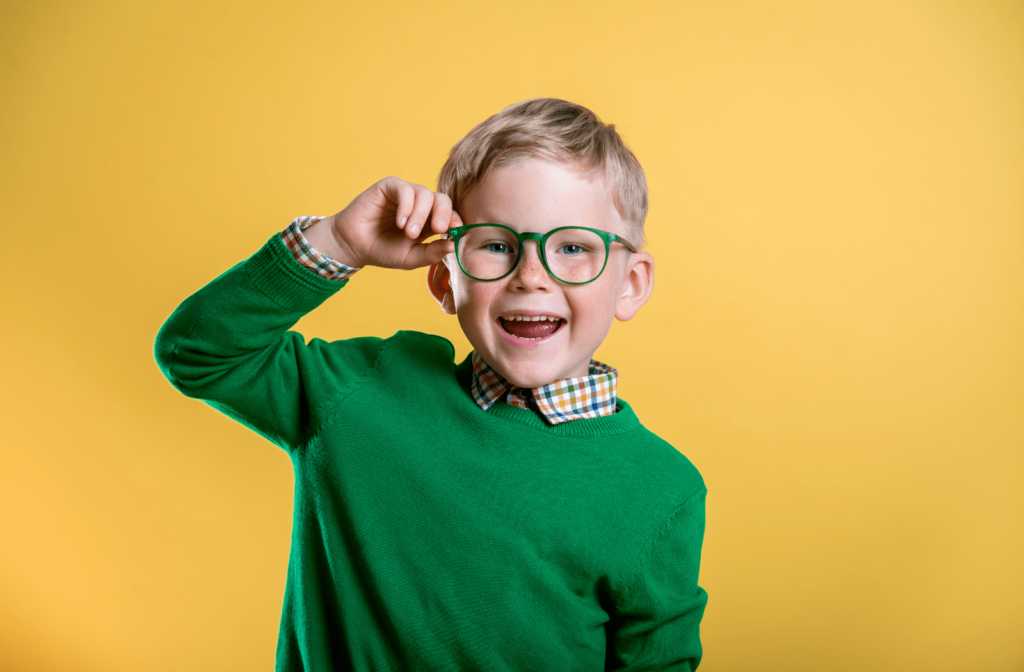Myopia affects roughly one-third of Canadian children, and its prevalence is increasing globally. More than half of the world’s population will be myopic by 2050. Unfortunately, childhood myopia often worsens as children grow older.
The good news is that recent advances in optometry have successfully discovered methods to manage myopia, making it easier to live with.
Even a relatively mild case of myopia in childhood can progress to a severe case by the time your child reaches adulthood if not treated.
Myopia control therapy works by slowing the growth of the eye. This can be managed through specially designed glasses, contact lenses, or atropine eye drops.
Myopia Management
There is no single best method for correcting myopia. Your child’s eyes and their lifestyle will determine the best myopia management for their situation.
Discuss daily activities with your eye doctor so that you can determine the best treatment options for your child’s specific needs.
Regular Eye Exams Can Help
It’s not always evident that your child’s vision is deteriorating. They should get regular eye exams as recommended by your eye doctor to see if their prescription has changed. Wearing the proper prescription is important in myopia management.
Glasses for Myopia Control
MiYOSMART lenses use D.I.M.S. technology (Defocus Incorporated Multiple Segments). D.I.M.S is made up of a clear central zone that corrects the child’s myopia so that they can see clearly in school, in sports, and while watching TV.
The important part of MiYOSMART lenses is the inclusion of multiple defocus segments that are evenly spaced around the clear central zone and extend into the lens’s mid-periphery to control myopia progression. As a result, the MiYOSMART lens provides clear vision, as well as myopic defocus, at all viewing distances.
Contact Lenses for Myopia Control
MiSight
MiSight soft contacts are specifically designed for children aged 8 to 12. The dual-focus optical design of this daily-disposable soft contact lens provides your child with clear vision while also signalling the eye to slow down in its growth.
MiSight slowed myopia progression by 59% when compared to single vision lenses. By doing so, you can help your child today while also lowering the risk of vision-threatening eye diseases in the future.
Multifocal Lenses
Traditionally used on people over 40 to help them see close-up, multifocal contact lenses have also been shown to help control myopia in children.
The soft multifocal contact lenses have two basic light-focusing regions and are shaped like a bullseye.
The centre of the lens corrects nearsightedness and directs light onto the retina for clear long-distance vision. The lens’s outer portion adds more focusing power to focus stray light rays in front of the retina.
Orthokeratology
You may be familiar with orthokeratology, also known as ortho-k, as a myopia treatment. To flatten the cornea and lessen myopia symptoms, a series of hard contact lenses are worn to reshape the eye. Every night before going to bed, you put in the rigid contact lenses to wear while you sleep.
Wearing Ortho-K lenses will only temporarily improve your vision. When the lenses are removed for the day, the cornea gradually assumes its original shape, and myopia returns. Regardless, ortho-K may provide some long-term reduction in myopia progression.
Overnight orthokeratology was successful in slowing the progression of myopia over a twelve-year follow-up period.
Atropine Eye Drops
Atropine eye drops are used to dilate your pupils during an eye exam. When given in small doses to children over two to three years, the drops may slow the progression of myopia.
Although it is unclear exactly why these drops work for slowing myopia progression, doctors think that these drops may stop the eye from lengthening.
Get Outside
People usually worry that their children are spending too much time watching TV or using devices. This is true, but it’s less about the time staring at the screens. When it comes to myopia it’s because less time is spent outside playing as a result of device use.
There is proof that kids with little outdoor time are more likely to become myopic. More time spent outside can also aid in delaying or preventing the onset of myopia.
The exact cause is unknown, but it’s assumed to have something to do with how much ambient light the eye receives outdoors versus indoors and how exposure to a lot of sunlight aids in modulating healthy and appropriate eye development.
The total amount of time spent outdoors matters more than the specific type of activity.
Call Your Optometrist
There are options available if you’re a parent looking for ways to slow down your child’s myopia. Considerations to keep in mind when selecting which option will be best for your child’s myopia include prescription, degree of myopia, pupil size, shape, and sensitivity, as well as personal hygiene, maturity, compliance, lifestyle, and extracurricular activities.
Make an appointment with Total Focus Optometry today to determine the best vision correction method for your child.



